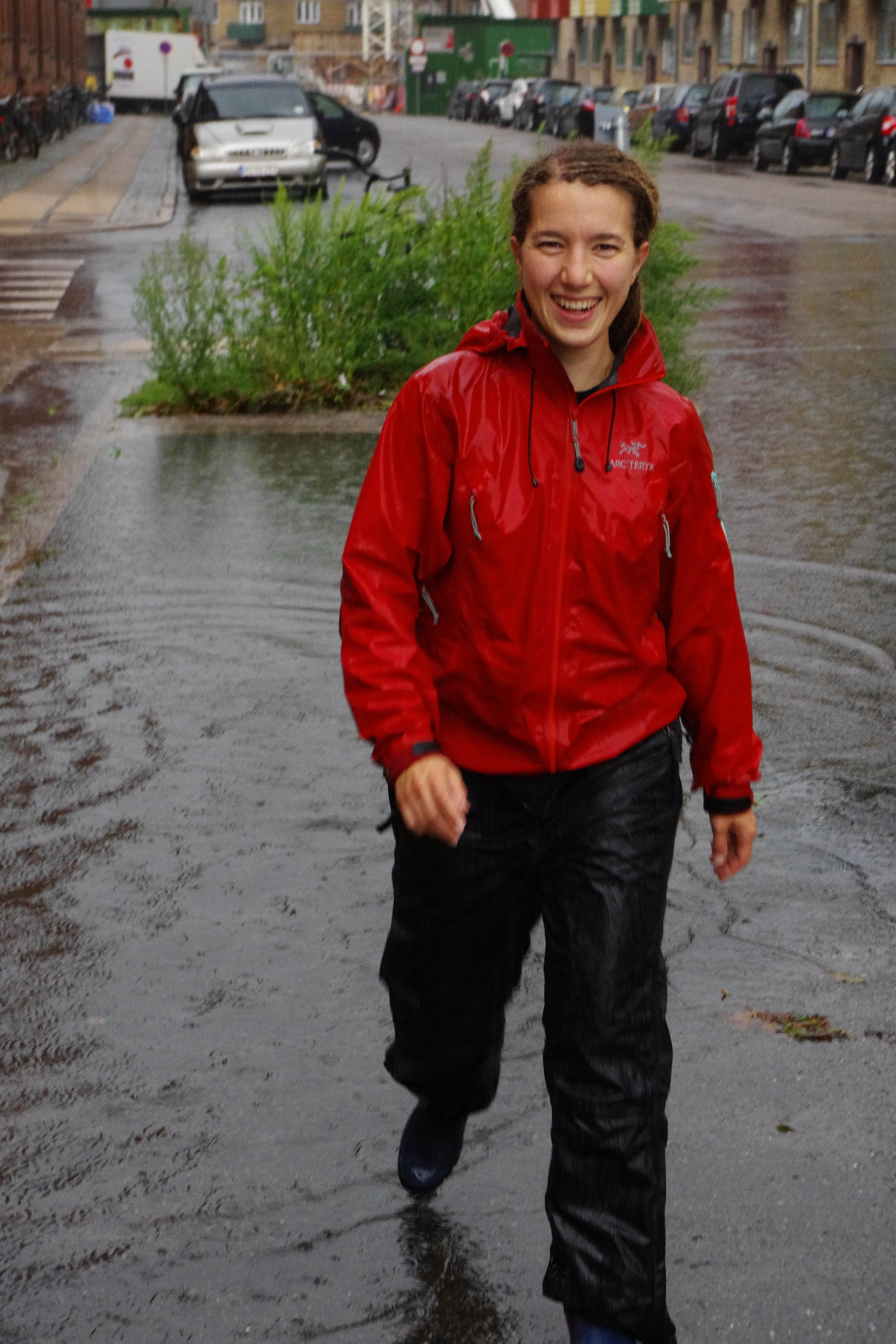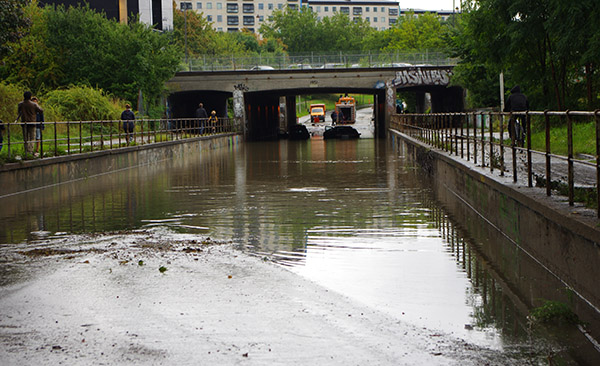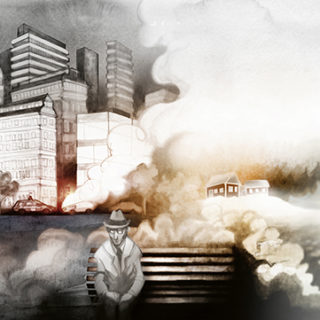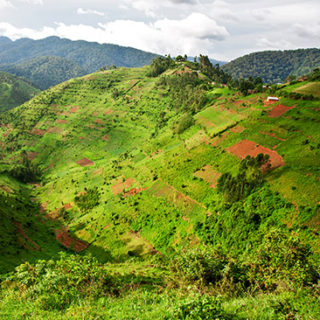Blue-green infrastructure protects against downpours
As a consequence of climate change, we may need to get used to increasingly extreme weather in the future – periods of drought as well as heavy downpours. In recent years, our cities have proved vulnerable to flooding after intense rain. This problem became very clear in Malmö in 2014 and Copenhagen in 2010, 2011 and 2014, for example. Major flooding in cities creates traffic problems, power cuts, flooded cellars and considerable financial damage for both municipalities and private individuals.
JOHANNA SÖRENSEN, a doctoral student in water resources engineering, is working on the project “Sustainable Management of Urban Flooding”. The project takes a broad approach to the problem of flooding, including urban planning as well as hydrological research and organisational issues concerning emergency preparedness. Johanna Sörensen is focusing on what is known as pluvial flooding, that is flooding caused by major rainstorms.
She explains that a contributing factor to pluvial flooding in cities is not only the amount of rain, but the current shortage of places for the water to go.
“There is a lot of construction in Sweden today. And the cities are not only expanding outwards, but becoming more dense”, says Johanna Sörensen. “When cities increase in density, they have more and more hard surfaces such as buildings and asphalt, which increases run-off. The water then rapidly flows into depressions such as cellars and low points in the city, causing problems.”
Can these problems be addressed through construction?
“Yes, or at least prevented”, says Johanna Sörensen. “As we undertake construction and renovation projects, it is essential that we include the problem of flooding in our calculations. It is important to include more green areas in urban planning. Open stormwater management, such as ponds, canals and meandering streams which can take up rainwater is significant. Such blue-green infrastructure helps to slow down the flow of water”, she continues, adding that it also makes our cities more beautiful and more healthy. “Our research has shown that open stormwater solutions protect against flooding, despite the fact that they are often designed for more ordinary rain levels.”
“As we undertake construction and renovation projects, it is essential that we include the problem of flooding in our calculations.”
More thought should be put into where and how new green areas are laid out.
“In many places, there are large green areas which could be excellent places to gather water in case of rainstorms, but unfortunately they are often located on high ground, so the water runs down to roads and cycle paths instead, and from there into the drainage system”, says Johanna Sörensen. “If the green areas were located below street level instead, the water would collect there, protecting against flooding.”
“In order to adapt our cities to deal with major rainstorms, we need to integrate multifunctional solutions, such as green areas which could function both as parks and walkways and components of the blue-green infrastructure”, says Johanna Sörensen.

Johanna Sörensen is a doctoral student in water resources engineering.
Unfortunately, it is not always so easy to coordinate the numerous public administrations involved in the planning and implementation of such solutions. A shortage of space is a major problem, meaning that green areas are not always given highest priority.
There are several other organisational stumbling blocks which complicate the work of adapting our cities to climate change. One such obstacle is the difficulty in determining where financial responsibility for implementation rests.
“Water and sewage managers, for example, are not responsible for sizing the water and drainage systems for the heavy downpours we see today, but only for the sort of rain we expect to experience once every ten years”, explains Johanna Sörensen. “The really major floods occur once a century or even once every two hundred years, and there is no clear responsibility for dealing with them.”
From a purely statistical perspective, once-a-century events should only occur about once in a hundred years, but in recent years we have experienced a suspiciously high number of such events. And even if opinions are divided as to whether these events are connected to climate change, Johanna Sörensen believes we can assert that something has indeed happened to the climate, when Copenhagen has been hit in the past seven years by three rainfalls so heavy that they should each have happened in a separate century, according to theory. In any case, there are good reasons to prepare for heavier rain in the future.
As a private person, what can you do to protect yourself against flooding?
“We can start by helping each other by adapting our gardens to absorb rain, i.e. by not paving over large areas but keeping gravel, lawns and flower-beds instead”, says Johanna Sörensen.
“If you have a drain in your cellar, you can install a one-way valve, to prevent rain and floodwater from flowing back into the house in case of flooding. To prevent flooding in the cellar, you can add a step in front of the access so that you have to step up before going down in to the cellar”, she continues. “Usually, water is able to cascade freely down cellar stairs. The same applies to garage entrances and suchlike. These solutions make sense both for private individuals and for other property owners.”
One can also direct drainpipes away from the house, down into the lawn for example, to avoid water gathering around the house.
”You have to be careful how you do this so that you don’t direct the water straight into the drainage meant to protect the house”, points out Johanna Sörensen. “But there is good information available about this”, she continues, suggesting that it is possible to lay out an attractive rain garden.
Text: Catrin Jakobsson
Photo: Johanna Sörensen and Henrik Rasmussen









